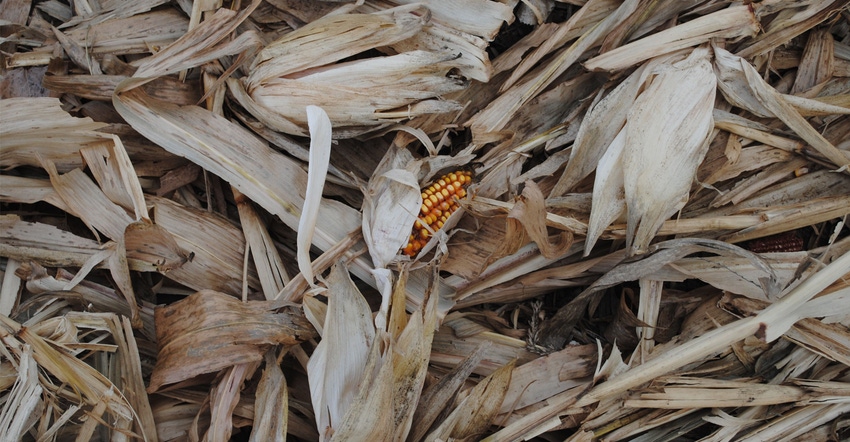
The worst downed corn cases witnessed this past harvest season by Nebraska Extension educator Jenny Rees were in Hamilton, York and northern Clay counties, where losses ranged from 70 to 100 bushels per acre or more.
"It's hard to grasp how much of the state was affected," Rees says. "I've heard as little as 2-bushels-per-acre loss to downed corn and as much as 125 bushels per acre on the ground."
Rees hypothesizes, along with many Nebraska Extension researchers, about the causes of this past year's losses and planning for the future to prevent it from happening again.
She calls this past year the "perfect storm" of circumstances that were a combination of contributing factors. Some of these might include high heat and drought stress during pollination that led to weakened ear shanks. Couple this with cool August temperatures and a long grain-fill period that resulted in larger, heavier ears. Add late-season, excessive October rains that allowed for greater stalk and ear rot. And for good measure, throw in rapid kernel moisture dry down and a week of extremely high sustained winds. Together, that's the "perfect storm."
While Rees doesn't find any consistent relationship with specific cultural practices and the worst cases of downed corn, she did consistently see higher-yielding parts of fields, or fields with better fertility and soil conditions experience more ear loss and lodging issues. "The hypothesis is that corn may have grown faster in those areas and may not have had the stalk strength later on," Rees says.
"The past two years we've had different challenges with higher-yielding 'racehorse' hybrids," she explains. "We've had two strange years in a row and may continue to have them." The seed industry works hard to develop hybrids in numerous environments, so Rees doesn't recommend shying away from higher yielding varieties.
"I would plant them, but in addition to more defensive hybrids as part of a total risk management package," she says. Maybe on-farm tests are needed to compare some practices related to high yielding hybrids, Rees adds. "Perhaps consider backing off on plant population and/or fertility on racehorse hybrids and compare that to a current practice," she says. "From my observations, problems in some high-yielding hybrids occurred to a lesser degree when planted at lower populations vs. higher populations. Differences occurred between population shifts from irrigated to nonirrigated areas in the fields."
While Rees doesn't have specific research to back up these observations, she believes it would be useful to compare lower vs. higher populations on these same hybrids. "Another consideration for the next growing season, which I realize goes against the grain, is to consider maximizing profit vs. maximizing yield," she says. "We will also have some farmers trying this through on-farm research this upcoming season."
Anyone who might be interested in any of these on-farm research studies mentioned by Rees should contact her at [email protected].
About the Author(s)
You May Also Like






